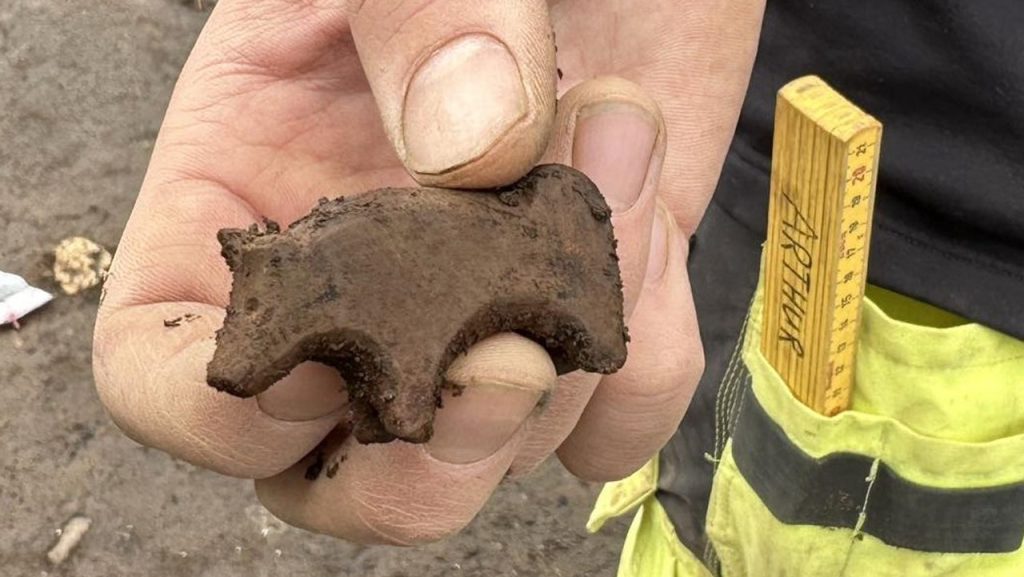Archaeologists in Iceland discovered a rare toy dating back to the Viking Age during an excavation in the town of Fjörður in Seyðisfjordurr. The toy, carved from stone, is small in size, measuring about 5 centimeters in length and 2.7 centimeters in height. While the time period the toy comes from is known, there is still debate among researchers about what animal the figure represents. Some believe it could be a pig, bear, or even an Icelandic dog. The discovery of the toy is significant as children are not commonly associated with the Viking Age, making this finding unique in showcasing a piece of history related to children.
The found toy is just one of over 100 gaming pieces that have been uncovered during the excavation, along with other unique artifacts found in four graves. In one of the male graves, only teeth remained, yet he was buried in a boat alongside a dog, horse, and various grave items. In another grave, the woman’s bones had disappeared, but her position and belongings were inferred from the artifacts found. These included beads, gaming pieces, a silver brooch, a silver ring, an ax, and various other items that shed light on the lives and customs of people living during the Viking Age in Iceland. The excavation has provided valuable insights into the burial practices and material culture of this period.
The date of the toy’s creation was estimated to be around 940-1000 during the Viking Age based on where it was found and the material it was made from. The toy was discovered in the floor of a longhouse, crafted from Palagonite tuff which likely contributed to its preservation over the centuries. Organic materials such as wood are rare to find preserved in Iceland, making the discovery of stone objects like this toy particularly significant for researchers studying the history and archaeology of the region. More research will be conducted on the toy and other artifacts found during the excavation to further understand their significance and contribution to our knowledge of Viking Age Icelandic society.
The excavation in Fjörður has revealed a wealth of information about the Viking Age in Iceland through the discovery of various artifacts, including the toy and gaming pieces, grave goods, and other items found in the graves. The careful examination of these finds provides valuable insights into the daily lives, customs, and material culture of the people who lived in this region during this time. The findings also shed light on burial practices, social stratification, and the importance of objects and symbols in Viking Age society. The continued excavation and research in Fjörður will likely uncover more treasures and expand our understanding of this fascinating historical period.
The significance of finding a toy related to children in the Viking Age cannot be overstated, as it provides a rare glimpse into the lives and activities of young people during this time. Archaeologists and researchers will continue to study the toy and other artifacts found during the excavation in Fjörður to uncover more about the people who lived in this area and their customs and traditions. The careful analysis of these finds will contribute to a better understanding of the Viking Age in Iceland and add to the body of knowledge about this period in history. The ongoing excavation in Fjörður promises to unearth more fascinating discoveries and further enrich our understanding of the past.


